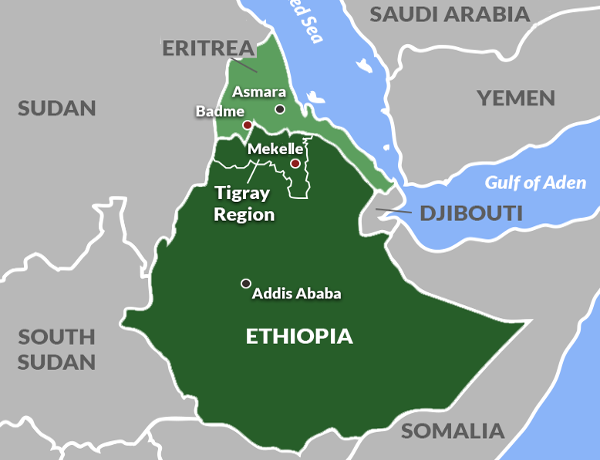PAULOS TESFAGIORGIS is interviewed by PIERRE BEAUDET

During the liberation war from the mid-seventies to the early 1990s, Paulos Tesfagiorgis was head of the Eritrean Relief Agency (ERA), the central organism that organized the provision of goods in the liberated areas of Eritrea and supported the Eritrean People’s Liberation Front (EPLF) shadow state they had set up throughout the country until their victory in 1991. As a senior member of the EPLF, Tesfagiorgis was involved, along with Isaias Afwerki, in the core leadership until the end of the 1990s, when serious cracks occurred within the government and the party, which led to the imprisonment and exile of many leaders, including Ministers and journalists and Tesfagiorgis.
Later, the anti-democratic drift continued through ups and downs that have made Eritrea one of the poorest, most repressed and deprived African countries. In parallel, the Afwerki regime has been involved in many wars, resuming military confrontation (1999-2002) with Ethiopia and various regional interventions in the Sudan and Somalia. In the meantime, Tesfagiorgis, like many of his fellow compatriots and former leaders of the Eritrean revolution, have tried to bring the vast Eritrean diaspora together around a programme of peaceful change. The current war in Ethiopia in which Eritrea is also involved could lead to another case of devastation affecting the whole region.
Pierre Beaudet (PB): This new war has erupted within Ethiopia (105 million people) and the rebellious northern province of Tigray (6 million people). It seems strange, considering that, from 1991 (when the revolution toppled the Mengistu regime), the Tigray People’s Liberation Front (TPLF) was central to the new government. Indeed, the head of the TPLF, Meles Zenawi, became the head of state of Ethiopia until his death in 2012. What has happened?
Paulos Tesfagiorgis (PT): The new Ethiopia that came about in 1991 was the result of a military victory against the Derg (the military government of Ethiopia) led by the TPLF and the Eritrean People’s Liberation Front (EPLF). At that time, as comrades in arms, the two fronts took control of both Ethiopia and Eritrea. As far as Ethiopia is concerned, the TPLF dominated the alliance of four parties formally in charge (Ethiopian People’s Revolutionary Democratic Front) of government with a strong core of experienced military and political Tigrinya leaders. They ruled with an iron fist, but they were successful in transforming the country by investing heavily in infrastructure, industry, and education, and creating a huge wealth.
PB: What was the project?
PT: An African version of the “development state” was imagined by Meles. With these initiatives, a relatively efficient state apparatus, and later, with Chinese investments, Ethiopia went in a double-digit growth rate several years. Even in the countryside, a new prosperous peasant class started to thrive. And contrary to other African states dependent on natural resources, the Ethiopian boom was land and labour-intensive, creating lots of jobs, and with a larger diversified base in both rural and urban areas. It was, one has to say, an African ‘success story’.
Socialist Project for more
